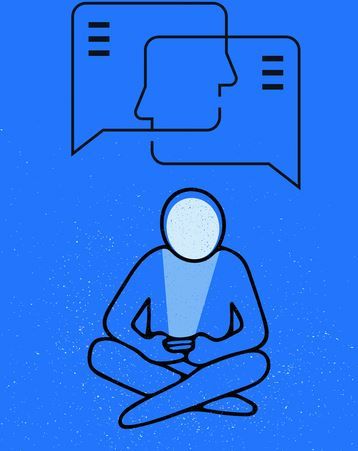News
Article
Seltorexant for Major Depressive Disorder With Insomnia Symptoms Sees Positive Results
Author(s):
Research on MDD treatments seltorexant and Spravato (esketamine) CIII nasal spray shared at 2024 ASCP Annual Meeting.
melita/AdobeStock

Johnson & Johnson shared positive topline results from the pivotal phase 3 MDD3001 clinical trial evaluating the efficacy and safety of seltorexant as an adjunctive treatment to baseline antidepressants in adult and elderly patients with major depressive disorder (MDD) with insomnia symptoms. Seltorexant is an investigational first-in-class selective antagonist of the human orexin-2 receptor being studied for the adjunctive treatment of MDD with insomnia symptoms. Findings were presented at the American Society of Clinical Psychopharmacology (ASCP) Annual Meeting, taking place from May 28-31 in Miami, Florida.1
Seltorexant demonstrated both a statistically significant and clinically meaningful improvement in depressive symptoms based on the Montgomery-Asberg Depression Rating Scale (MADRS) total score at day 43, and improved sleep disturbance outcomes in participants who had a prior inadequate response to SSRI/SNRI antidepressants alone, meeting all primary and secondary endpoints. Participants in this randomized, double-blind, multicenter, placebo-controlled study had moderate-to-severe depression despite ongoing treatment with SSRI/SNRIs and suffered from significant sleep disturbance. Investigators found seltorexant to be safe and well-tolerated, with similar rates of common adverse events in both trial arms, consistent with previous clinical trials of seltorexant.
“Depression is a leading cause of disability worldwide and shares a strong link with sleep disturbances. In MDD, insomnia symptoms exacerbate the risk of depressive relapse, increase healthcare costs and impact quality of life, and it often goes under treated despite being one of the most common residual symptoms,” said Andrew Krystal, MD, professor of psychiatry at the University of California, San Francisco Weill Institute for Neurosciences. “Seltorexant has the potential to fill a significant unmet need for new therapies to treat patients experiencing depression and insomnia, and most importantly, to improve outcomes and quality of life for these patients.”
As of today, there are no therapies approved to treat MDD with insomnia symptoms.
“For nearly 7 decades, Johnson & Johnson has delivered transformational treatments and solutions for people living with serious mental illness, and we are proud to present these data from our marketed and late-stage neuropsychiatry portfolios at ASCP,” said Bill Martin, PhD, Global Therapeutic Area Head, Neuroscience. “As global leaders, we must continue to drive innovation in the treatment of depression, bringing new mechanisms of action and potentially first-in-class therapies to the millions of people living with mental health disorders.”
Johnson & Johnson also presented positive topline results for Spravato (esketamine) CIII nasal spray as a monotherapy, which demonstrated rapid and sustained efficacy in treatment-resistant depression (TRD). Positive topline results from the randomized, double-blind, multicenter, placebo-controlled phase 4 TRD4005 study showed that Spravato CIII nasal spray met both its primary and secondary endpoints. Spravato provided rapid, statistically significant, and clinically meaningful improvement in depressive symptoms approximately 24 hours after the first dose and sustained through 4 weeks of treatment, as assessed by changes in MADRS total score. The safety profile of Spravato was consistent with the registration phase 3 studies of TRD in combination with an oral antidepressant. Investigators did not find any new safety concerns. Esketamine nasal spray is currently approved in the US for use in adults with TRD and MDD with acute suicidal ideation and behavior.
Back in December, Johnson & Johnson presented research at the American College of Neuropsychopharmacology (ACNP) 2023 Annual Meeting on esketamine nasal spray in adolescent patients with moderate to severe depression with marked suicidal ideation. Results showed that adolescent patients receiving 56 mg and 84 mg of esketamine nasal spray, added to an SSRI, showed clinically meaningful and statistically significant improvement of depressive symptoms 24 hours after the first dose compared to those receiving a psychoactive comparator (midazolam) added to an SSRI.2
Exclusive Q&As on seltorexant with Andrew Krystal, MD, and Wayne Drevets, MD, PhD, coming soon.
References
1. Johnson & Johnson pivotal study of seltorexant shows statistically significant and clinically meaningful improvement in depressive symptoms and sleep disturbance outcomes. News release. May 29, 2024. https://www.jnj.com/media-center/press-releases/johnson-johnson-pivotal-study-of-seltorexant-shows-statistically-significant-and-clinically-meaningful-improvement-in-depressive-symptoms-and-sleep-disturbance-outcomes
2. Kuntz L, Canuso C. New data on esketamine nasal spray as treatment for adolescents contemplating suicide. Psychiatric Times. December 12, 2023. https://www.psychiatrictimes.com/view/new-data-esketamine-nasal-spray-as-treatment-for-adolescents-contemplating-suicide






